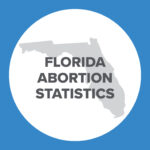Federal Appeals Court Upholds Kentucky’s Informed Consent Ultrasound Law
by Thomas M. Messner, J.D.
On April 4, 2019 the U.S. Court of Appeals for the Sixth Circuit upheld Kentucky’s “Ultrasound Informed Consent Act,” also known as House Bill 2 (“H.B. 2”). The opinion draws heavily from the 2018 Supreme Court ruling in the NIFLA v. Becerra pregnancy help center case. In upholding Kentucky’s ultrasound informed consent law, the Sixth Circuit delivers an important victory for one of the great public policy achievements of the pro-life and pro-woman movement.
Case Information
The case is EMW Women’s Surgical Center, P.S.C. v. Beshear, docket number 17-6151 in the circuit court (as consolidated with case No. 17-6183) and docket number 3:17-cv-00016 in the trial court, the U.S. District Court for the Western District of Kentucky. The Sixth Circuit opinion was authored by Judge Bush. Judge Norris joined the opinion. Judge Donald dissented from the informed consent holding and delivered a separate dissenting opinion.
H.B. 2 was challenged by Plaintiffs-Appellees EMW Women’s Surgical Center, P.S.C. and its associated physicians. Plaintiffs won an initial victory at the trial court level in January 2017. On appeal, the Sixth Circuit reversed the trial court decision and vacated the injunction against H.B. 2.
Kentucky’s Ultrasound Informed Consent Act (H.B. 2)
In its opinion, the circuit court identifies several key features of H.B. 2.
“H.B. 2 directs a doctor, prior to performing an abortion, to perform an ultrasound; display the ultrasound images for the patient; and explain, in the doctor’s own words, what is being depicted by the images—for example, pointing out organs and whether the patient is pregnant with twins.”
“There is no requirement that the patient view the images or listen to the doctor’s description.”
“The doctor also must auscultate the fetal heartbeat but may turn off the volume of the auscultation if the patient so requests.”
“H.B. 2 does not penalize a doctor if the patient requested that the heartbeat sound be turned off or chose not to look at the ultrasound images.”
“Nor does H.B. 2 penalize a doctor if she or he exercises discretion to advise a patient that she need not listen to or view the disclosures, or if the doctor makes any other statement, including advising the patient to have an abortion.”
“Finally, a doctor need not make any disclosure from H.B. 2 at all if an abortion is medically necessary or in the case of a medical emergency.”
First Amendment Principles Applied to Informed Consent Laws
On appeal, the circuit court explained that the case “turns on a pure question of law: does H.B. 2 compel a doctor’s speech in violation of the First Amendment?” The Supreme Court has clarified, writes the Sixth Circuit, “that the First Amendment has a limited role to play in allowing doctors to avoid making truthful mandated disclosures related to informed consent.”
The professional conduct exception to heightened scrutiny
The circuit court explained that “[h]eightened scrutiny generally applies to content-based regulation of any speaker, including a physician or other professional.” However, “as the Supreme Court noted in NIFLA, there is ‘less protection for professional speech in two circumstances’,” including “for regulation of ‘professional conduct, even though that conduct incidentally involves speech.’” This professional conduct exception is at issue in this case because, in the words of the circuit court, “H.B. 2 regulates doctors’ conduct: performing abortions.”
The circuit court looked to the 2018 opinion of the U.S. Supreme Court in NIFLA v. Becerra. In NIFLA, the circuit court writes, the Supreme Court “acknowledged that ‘drawing the line between speech and conduct can be difficult,’” but nevertheless “held that statutes that ‘facilitate informed consent to a medical procedure’ … fall on the conduct side of the line because they regulate speech ‘only as part of the practice of medicine, subject to reasonable licensing and regulation by the State’” (quotations inside Supreme Court quotation omitted).
The legal test for evaluating informed consent laws
Here the Sixth Circuit sets out the key test for evaluating an informed consent law:
Under the First Amendment, we will not highly scrutinize an informed consent statute, including one involving informed consent to an abortion, so long as it meets these three requirements: (1) it must relate to a medical procedure; (2) it must be truthful and not misleading; and (3) it must be relevant to the patient’s decision whether to undertake the procedure, which may include, in the abortion context, information relevant to the woman’s health risks, as well as the impact on the unborn life.
The circuit court applied this test to H.B. 2 and concluded that the law satisfied each element of the test. H.B. 2 relates to a medical procedure and the mandated disclosures are truthful and not misleading. The circuit court also concluded that the disclosures mandated by H.B. 2 are “relevant to the patient’s decision whether to abort unborn life.”
In short, the Sixth Circuit concluded that H.B. 2 “provides truthful, non-misleading, and relevant information aimed at informing a patient about her decision to abort unborn life. Therefore,” the court writes, “although the statute requires doctors to disclose certain truthful and non-misleading information relevant to the abortion procedure, it does not violate their First Amendment rights because the required disclosures are incidental to the Commonwealth’s regulation of doctors’ professional conduct.”
The Awesome Importance of Ultrasound Informed Consent Laws
In reaching its conclusion as to the third element—whether the disclosures mandated by H.B. 2 are “relevant to the patient’s decision whether to abort unborn life”—the circuit court explained that “[t]he Supreme Court’s abortion precedent answers this question for us.”
“Abortion is a unique act,” Casey, 505 U.S. at 852, that “requires a difficult and painful moral decision,” Gonzales v. Carhart, 550 U.S. 124, 159 (2007). It is “fraught with consequences . . . for the woman who must live with the implications of her decision.” Casey, 505 U.S. at 852. “[I]t seems unexceptionable to conclude some women come to regret their choice to abort the infant life they once created and sustained. Severe depression and loss of esteem can follow.” Gonzales, 550 U.S. at 159 (citations omitted). Abortion also is “fraught with consequences . . . for the life or potential life that is aborted,” Casey, 505 U.S. at 852, in whom the State may have a significant interest, Gonzales, 550 U.S. at 158, and who cannot consent to the procedure to terminate her or his life or potential life. Thus, the Supreme Court has explained that the effect of an abortion procedure on unborn life is “relevant, if not dispositive” information for the patient’s decision. See Casey, 505 U.S. at 882 (emphasis added).
“With this background in mind,” the circuit court writes, “we hold that H.B. 2 provides relevant information.” For one thing, “The information conveyed by an ultrasound image, its description, and the audible beating fetal heart gives a patient greater knowledge of the unborn life inside her.”
In addition, the information conveyed by an ultrasound image “inherently provides the patient with more knowledge about the effect of an abortion procedure: it shows her what, or whom, she is consenting to terminate.”
That information provided by an ultrasound “might persuade a woman to change her mind does not render it suspect under the First Amendment,” the circuit court writes. “It just means that it is pertinent to her decision-making.” Here the circuit court quotes from the plurality opinion in the 1992 Casey Supreme Court case explaining that information on the impact of abortion on unborn life “furthers the legitimate purpose of reducing the risk that a woman may elect an abortion, only to discover later, with devastating psychological consequences, that her decision was not fully informed.”
In a precious piece of judicial writing, the circuit court goes on to explain the significance of ultrasound protocols in our modern society. “Sonograms of unborn life were uncommon when Roe was decided,” the circuit court explains. “Writing for the Roe Court, Justice Blackmun was limited by words on paper—sometimes using medieval descriptions such as ‘quickening’ or ‘infused with a ‘soul’ or ‘animated’’—to explain when life had been understood to come into being. Roe, 410 U.S. at 133. But in the Cyber Age,” the circuit court continues, “words tell only part of a story.” The circuit court then delivers this flourish. “For today’s Posterity—the Gen-X, Millennial, and Gen-Z generations, whose first picture of themselves commonly comes from a sonogram, and who increasingly turn to photos and videos to share information—one can hardly dispute the relevance of sonogram images for twenty-first-century informed consent.”





























